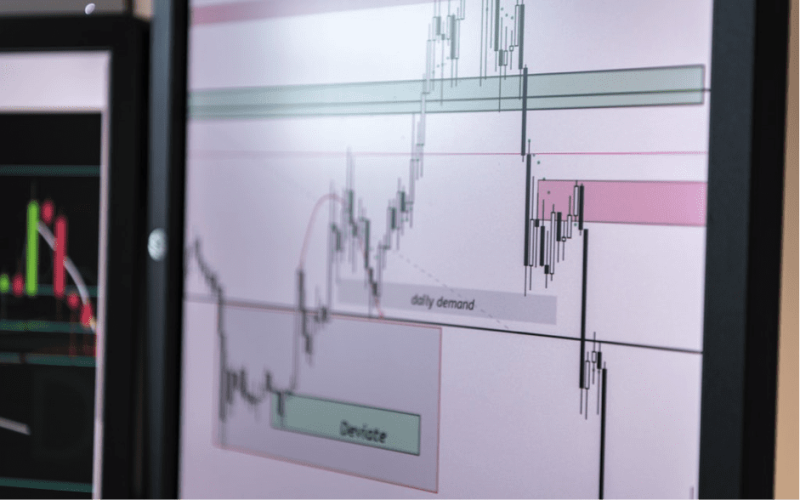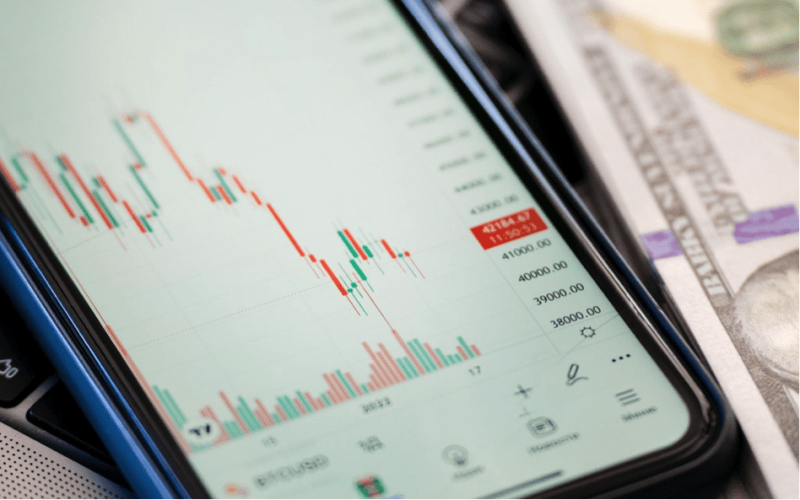The Bear Put Spread options strategy entails selling one Put Option since synchronously purchasing another. In this case, as opposed to the Bear Call Spread, you pay the more significant premium and obtain the lesser premium.
There is a deficit in premiums as a result. Your reward is restricted to the variation in Put Option strike prices less net premiums, while your risk is limited to the luxurious difference.
In financial trading, this strategy helps traders anticipate a moderate decline in the underlying asset price. This strategy is also referred to as the bear put debit spread because a net debit is made when entering the trade.
Also Read: What is the Bear Call Spread Strategy and How to Apply It?
Contents
- What Is Bear put spread options strategy?
- How Does It work?
- Who Can Use Bear Put Spread?
- How To Trade With Bear Put Spread Options Strategy?
- Advantages And Disadvantages Of Bear Put Spread Options Strategy
- Bottom Line
- FAQs
What Is Bear put spread options strategy?
To use this strategy, the investor must purchase a put option in the money (higher) and sell a put option that is out of the money (lower) on the same company and expiration date. This strategy results in a net loss for the investor.

The overall result of the strategy is to increase the breakeven point and decrease the cost of buying a Put (Long Put). The strategy requires a bearish viewpoint because the investment company will only profit if the stock price/index declines. Low risk and little profit are associated with this approach.
How Does It work?
The two puts in a bear put spread different strike prices: one long put has a higher strike price, and the other short put has a lower strike price. The underlying stock and expiration date of both puts are the same.
A bear put spread sets up for a net debit (or net cost) and gains as the price of the underlying stock drops. Maximum profit is restricted if the stock price rises above the long puts’ strike price, and potential losses are constrained if it falls below the short put’s lower strike price (higher strike).
Who Can Use Bear Put Spread?
Compared to a long put option, a bear put debit spread lowers the maximum loss and makes it more attractive for trading. The rules also limit the maximum gain potential.

A professional trader must have extensive technical skills to know the same strike price of a put option to maximize profits. This strategy is aimed mainly at intermediate & experienced traders.
When Should You Use A Bear Put Spread?
As its name suggests, a bear put spread is used when an investor anticipates that the asset’s price will be bearish to slightly bearish.
The ideal situation is when a trader anticipates that the asset’s price will decline in the near term but that it won’t fall below a specific key support level, which can be determined by strong moving average support or Fibonacci levels.
You should select an expiration date or date-to-expiration (DTE) that is 30 days later than the anticipated length of your participation in the trade (due to Theta decay). It’s best to choose a DTE close to 15 days + 30 days = 45 days, for instance, if you believe the price of Bitcoin will fall within 15 days or if you plan to be in the trade for 15 days.
How To Trade With Bear Put Spread Options Strategy?
A bear put spread setup develops from buying put options and simultaneously selling the exact number of puts on the same investment and expiration date but with a lower strike price.

The difference in the two strike prices, less the net cost of the options, is equal to the maximum profit possible using this strategy.
Determine And Target Solid Strike Prices
Buying put options and selling the same amount of puts on the same investment with the same expiration date and a lower strike price results in a bear put spread. The difference in the two strike prices, less the net cost of the options, is equal to the maximum profit possible using this strategy.
An individual who owns a put option has the option, but not the obligation, to sell a predetermined quantity of the respective security at predetermined strike prices at the option’s expiration or earlier.
Consider Options In Lower Strike Price
The bear put spread options strategy is an additional variety of vertical spread. This strategy involves the investor purchasing a predetermined number of put options at a predetermined strike price while concurrently selling the exact number of put options at lower strike prices. Both options are bought for the same underlying security and expiration date.
When a trader is bearish on the underlying asset and anticipates a decline in the asset’s price, they will use this strategy. The strategy provides limited gains and losses. The stock price must decline for this strategy to be carried out successfully.

While your upside is constrained when using a bear put spread, your premium outlay is decreased. Selling lower strike puts against expensive outright puts is one way to reduce the high premium.
Assess The Bear Put Spread Impacts On Stock Price Changes
When the stock price drops, the price of a bear put debit spread increases, and when the price rises, the debit spread decreases. This denotes a “net negative delta” for the position.
The change in option price is typically lower than dollar-for-dollar with the change in stock prices, according to Delta’s estimate of how much an options price will differ as the stock price changes.
A bear put spread’s net delta changes are very little as the stock price fluctuates, and the time until expiration stays the same because it comprises one long put as well as one short put option. This is referred to as a “near-zero gamma” in the language of the options. Gamma calculates how much a position’s delta will alter as the stock price changes.
Also Read: Bear Trap – The Best Technical Strategy to Profit from Short Squeezes
Advantages And Disadvantages Of Bear Put Spread Options Strategy
A bear put spread’s primary benefit is a reduction in the net risk of the trade. The cost of buying the put option with a higher strike price is partially offset by selling the put option within the lower strike price.
As a result, the net capital expenditure is less than purchasing a single put outright. Furthermore, since the maximum risk is restricted to the net cost of the bear put debit spread, it entails significantly lower risk compared to shorting the stock or security. The risk associated with shorting a stock is theoretically limitless if the price rises.

A bear put debit spread might be the best option if the trader thinks the underlying stock price or security will decline by a specific amount between the trade date and the expiration date.
The trader forfeits the right to that maximum profit if the underlying stock or security drops by a bigger margin. Many traders find the trade-off between risk and potential reward to be appealing.
In the prescriptive, the bear put spread’s profit is maximized if the underlying security closes at the lower strike price of $30 at expiration. There will be no further profit if it closes below $30.
A smaller profit will be if it closes between the two strike prices. Besides, the amount paid to buy the spread will be lost if it exceeds the higher strike price of $35.
Furthermore, like with any short position, option holders have no control over the deadline for fulfilling their obligation. Early assignment, or having to purchase or sell the specified quantity of the asset at the agreed-upon price, is a risk that is always present.

If a merger, takeover, special dividend, or another event that affects the option’s underlying stock occurs, the early exercise of the option is frequently the result.
Pros
- A lower risk than straightforward short-selling
- Works well in markets that are slightly declining
- Losses are limited to the total amount paid for the options.
Cons
- Early assignment risk
- Risky if the asset admires markedly
- Profits to the difference between strike prices
Bottom Line
The bear put spread strategy might be your best bet if your goal as a trader is to make money when markets decline by a certain amount. It provides a higher chance of profit than purchasing put options and lowers your potential loss if you choose the wrong course of action. Being less expensive to execute than an outright short position, the bear put spread is a fantastic alternative.
FAQs
What Is a Bear Put Spread Example?
Bitcoin is trading for about $2000 per day. If a trader believes bitcoin will fall in price within 20 days, then a trader can create a bear Put debit spread by buying put option contracts that expire in around 50 days. The trader believes bitcoins should never fall below $16,000. The bitcoin 500-week trend line is set to trigger in the worst-case scenario.
Is a Put Spread Bullish or Bearish?
A put spread is an options strategy used by bearish traders to maximize profits while reducing losses. A bear put spread trading strategy entails buying and selling puts on the exact same underlying asset at various strike prices within the same expiration date.
How Does a Bear Put Spread Make Money?
A bear put spread is when one puts buys another put and sells one put at lower strike costs, offsetting a part of upfront costs. Spread usually profiteers if stocks drop in value. Nevertheless, a stock can rally unexpectedly, and there may be risks.




